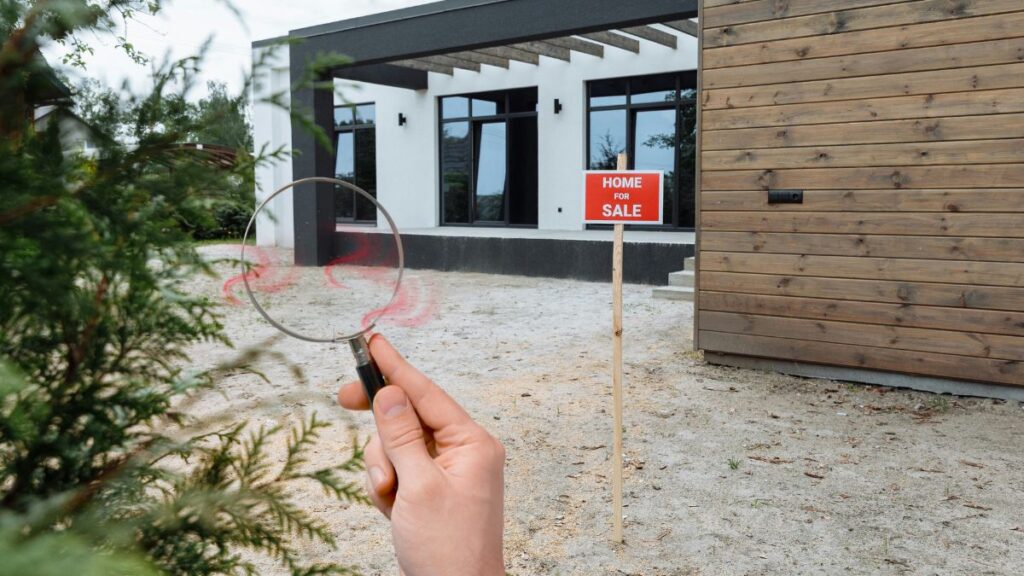When you walk into an open house, it’s easy to focus on square footage, upgrades, or asking price. But another question matters just as much: How does the space feel?
Does the front look welcoming? Does the layout carry energy smoothly and create a sense of stability?
Many signs of bad Feng Shui show up right away. You don’t need to be an expert. Below are several major red flags—design choices that can disrupt energy and make a home harder to feel settled in. When touring a house, watch out for Feng Shui red flags that may affect how the space feels.
1. Messy Surrounding Buildings
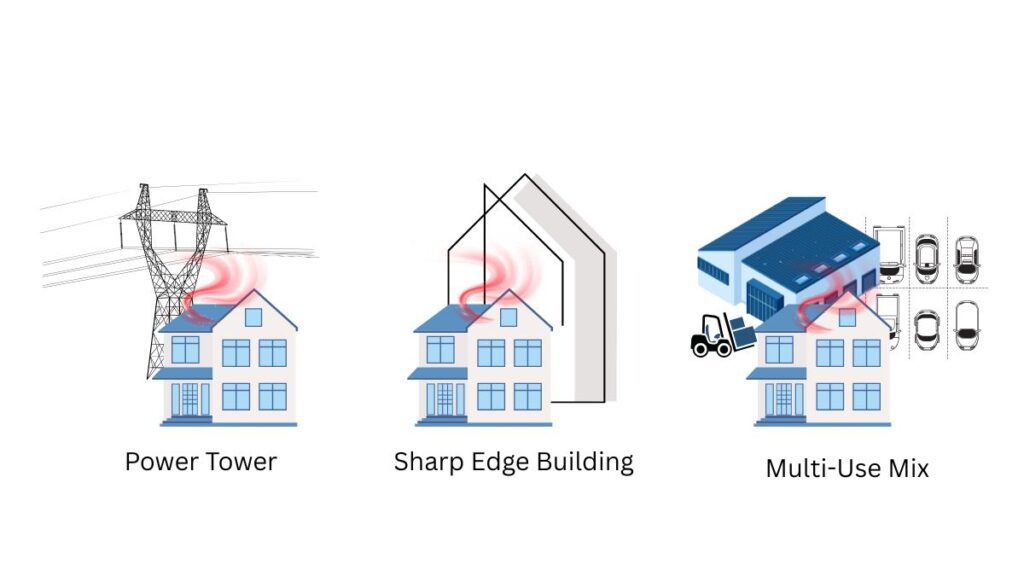
Some neighborhoods show three common patterns that disrupt balance:
- Power lines and towers dominate the view, cutting across the skyline.
- Mixed styles and scales appear side by side—modern homes next to older houses, with clashing colors, materials, or bulky, awkward shapes that create sharp edges.
- Multi-use mix puts apartments, shops, warehouses, or even parking lots right next to single-family homes.
All of these create a sense of visual noise. In Feng Shui terms, the surroundings make the energy flow unstable. A home functions like a container: if the outside environment is unsettled, the qi that enters will also feel unsettled. Sharp corners or intrusive forms in the view can generate sha qi, leaving residents with a sense of pressure rather than support.
2. Irregular Lots or Floor Plans

Some properties sit on land that feels awkward or uneven:
- Triangular lots that taper to a point.
- L-shaped or cut-out floor plan where parts of the house jut out or sink in.
- Sharp corners on the lot or building that feel aggressive.
Energy flows best in forms that feel whole and balanced. Irregular lots or homes with sharp angles break up that flow. Instead of gathering smoothly, qi scatters or presses into the living space, leaving the home unsettled.
3. Front Door and External Challenges
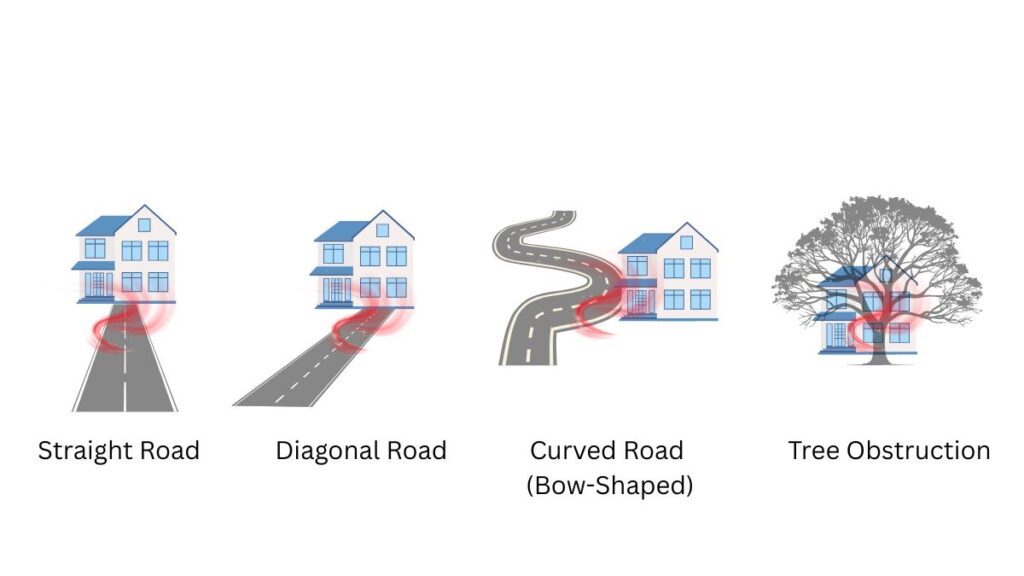
This is one of the most common Feng Shui red flags buyers notice right away. The area right outside the entrance often sets the tone for how energy enters the home:
- A road pointing straight at the front door makes energy rush in too fast.
- A road angling diagonally toward the door also creates a piercing, unsettled flow.
- A curved or “bowed” road that bends away from the house pushes qi outward, scattering it instead of gathering.
- A large tree directly in front of the entrance, if oversized, creates a heavy, pressing presence.
👉 For a deeper look at how different road patterns influence Feng Shui, see this guide on road layout Feng Shui.
The front door should feel open and welcoming. When it is rushed, blocked, or overshadowed, qi cannot settle smoothly, and the entrance carries tension rather than support.
4. Imbalance of Yin and Yang
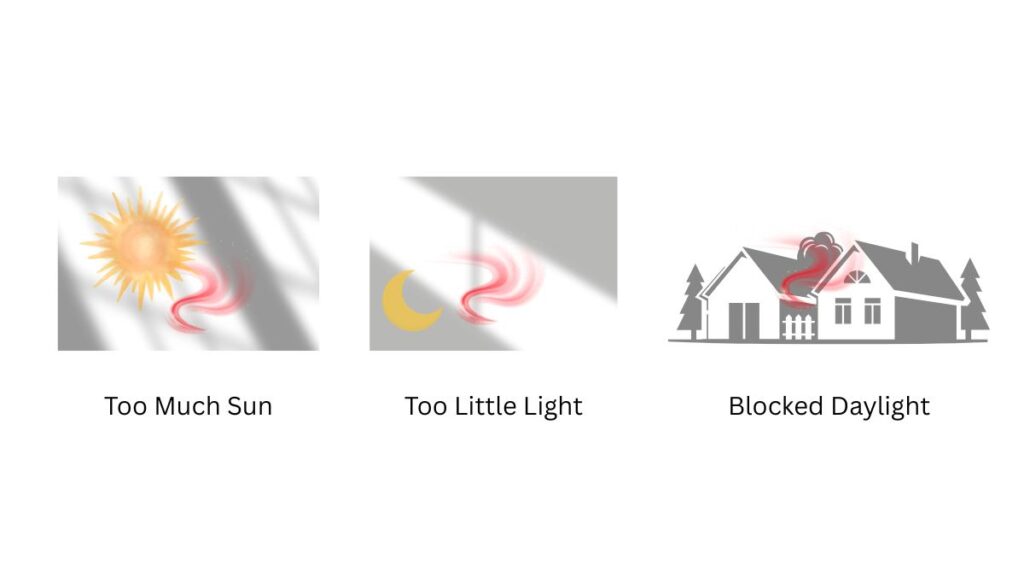
Light and shade shape the mood of a home. Too much exposure or too little daylight can both unsettle the balance:
- Homes with many south- or west-facing windows get strong sun all day, creating harsh heat and glare.
- Houses with too few windows, or mostly facing north or east, stay dim and damp with little natural light.
- In dense neighborhoods, nearby buildings can sit too close and block the main windows, cutting off daylight even during the day.
In Feng Shui, yin-yang balance is essential. When yang dominates, energy feels restless and hard to settle; when yin is too heavy, spaces feel heavy, low in mood, and less healthy. A good home allows both light and shadow, so qi feels lively yet calm.
5. Low Ceilings
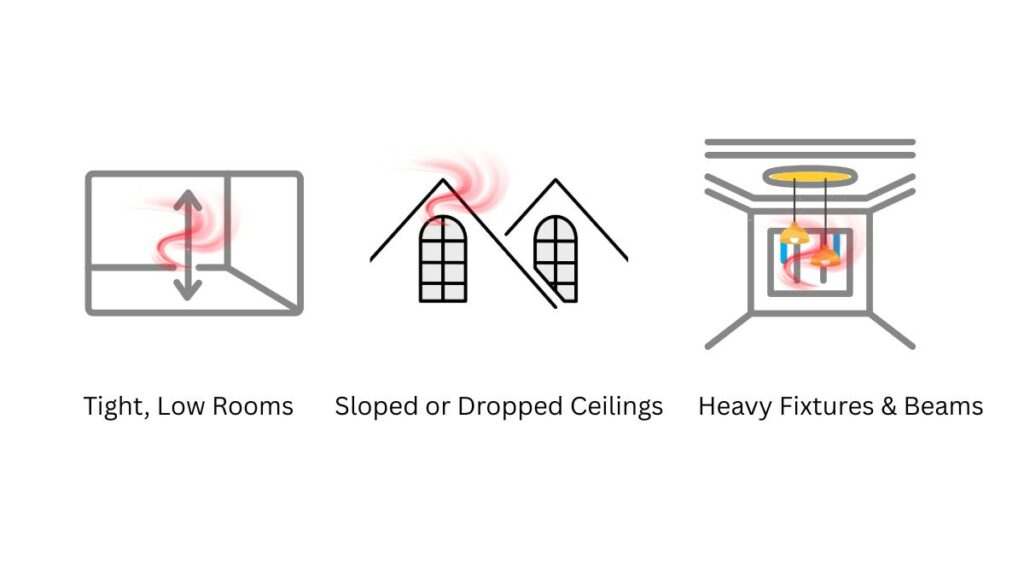
The height of a ceiling shapes how free or constrained the space feels. When ceilings press too close, both body and mind can feel compressed:
- Rooms with ceilings noticeably lower than average make the space feel tight and heavy.
- Attic conversions or basements with sloped or dropped ceilings create uneven pressure above.
- Decorative beams or oversized light fixtures that hang too low add to the sense of being weighed down.
In Feng Shui, low or pressing ceilings symbolize constraint. Instead of allowing energy to rise and circulate, qi feels blocked and restricted. Over time, this can show up as obstacles in career or finances, making it harder to expand and thrive.
6. Disturbed Home Center
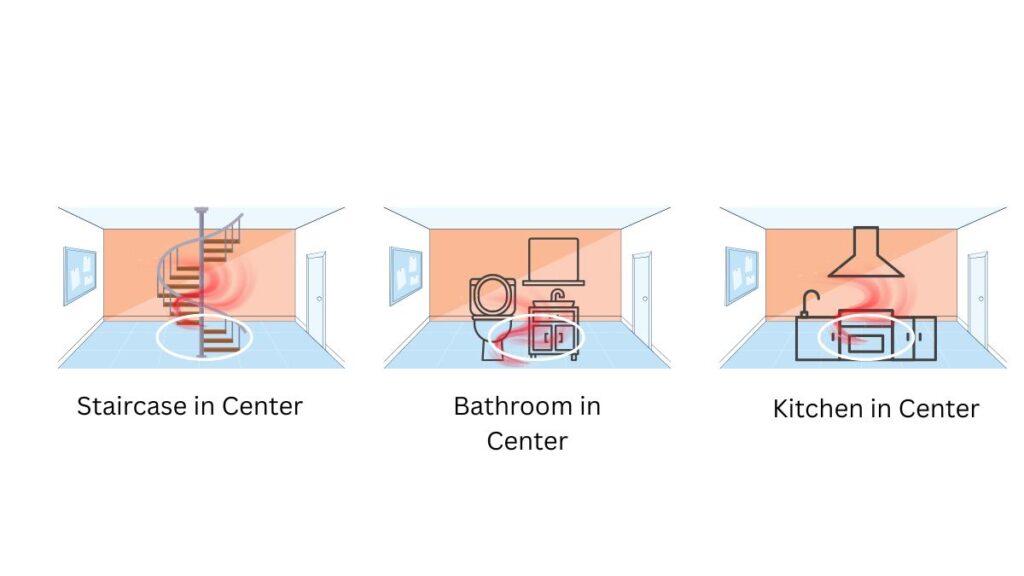
The very center of a home acts like its heart—it anchors stability and health for everyone inside:
- A staircase in the exact center brings constant movement, unsettling the core.
- A bathroom in the center introduces water and waste, disturbing balance.
- A kitchen in the center places fire in the heart, making the energy restless.
When the middle of a house is disrupted, the entire home loses steadiness. In Feng Shui, this often shows up as stress around health, relationships, or overall well-being.
7. Front Door and Internal Alignments
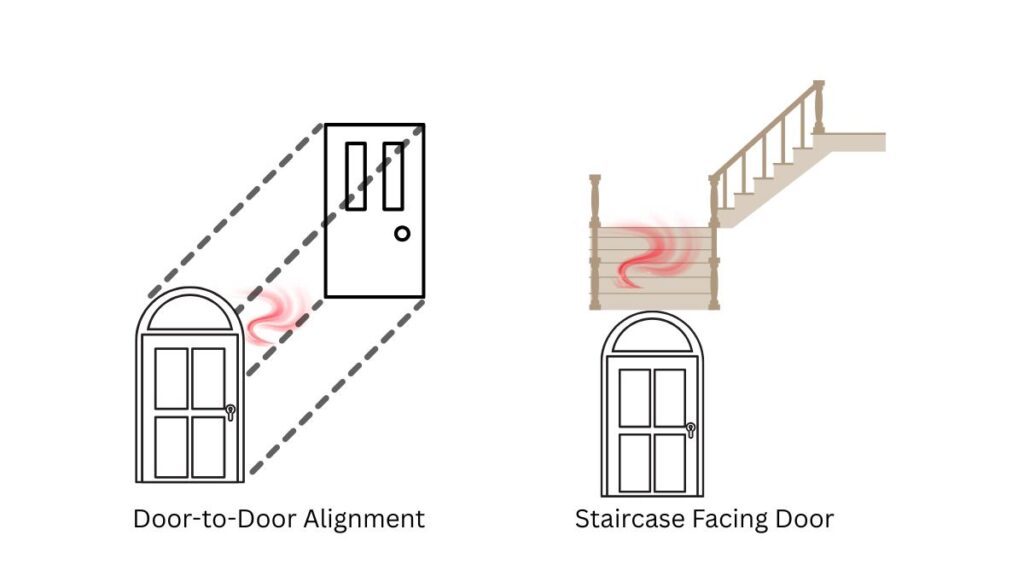
The way the front door connects with the inside of the home shapes how energy flows once it enters:
- When the front door is directly aligned with the back door or a large window, qi passes straight through too quickly, creating what Feng Shui calls a “piercing flow.”
- When the front door faces a staircase, energy rushes upward or downward, leaving the entrance unsettled.
For the home to feel welcoming and grounded, qi needs space to slow down and gather. If it escapes too fast, the entrance loses its ability to nourish the rest of the house.
8. Problematic Bedroom Layouts
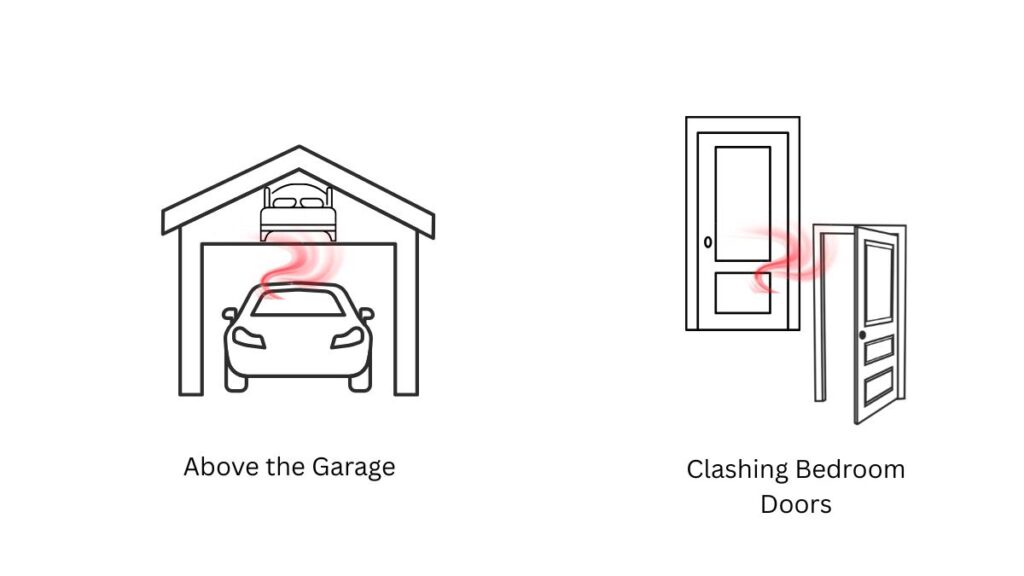
Bedrooms are meant to be places of rest and stability, but certain layouts disrupt that calm:
- When the master bedroom is placed above the garage, the constant movement, noise, or fumes below disturb the sense of stillness.
- When multiple bedroom doors directly face each other in a row, it creates a clashing flow of energy between the rooms.
Without a stable, supportive setup, bedrooms can feel restless, making it harder for occupants to fully relax and recharge.

